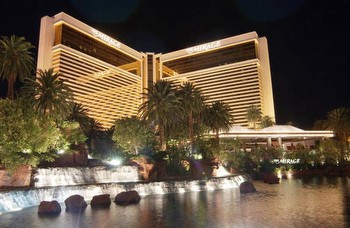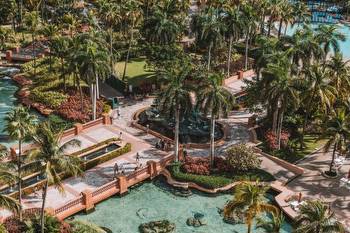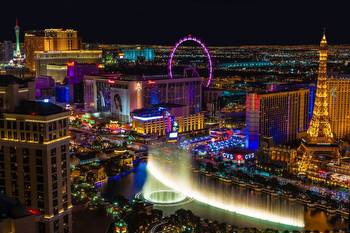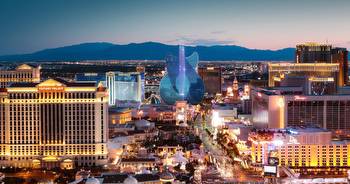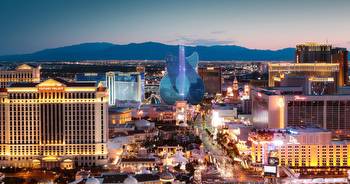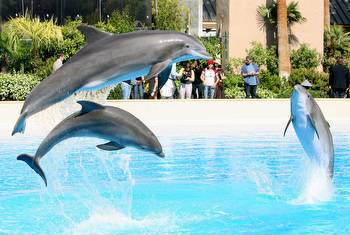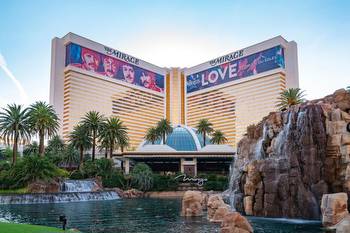Dolphins keep dying mysteriously at this Las Vegas casino

K2 was fun to be around. The bottlenose dolphin was an energetic 11-year-old, a young adult in dolphin years, who was born at The Mirage casino on the Las Vegas strip and lived his entire life there.
Visitors sometimes paid as much as $450 to have brief in-water interactions with him and other bottlenose dolphins.His handlers said he was often vocal and made people smile.
But earlier this month K2 started to show signs of illness. He didn’t want to eat his fish. Bloodwork showed his liver enzymes were high, and internal imagingprompted treatment for respiratory illness. His care team administered antifungals, antibiotics, and nebulizer breathing treatments.
Yet K2 died on September 24, marking the third dolphin death at The Mirage in just the past six months. Maverick, a 19-year-old dolphin, died earlier in September following treatment for a lung infection. And Bella, 13, died in April after being treated for gastroenteritis.
“It’s an exceptional number of deaths in such a short period,” says Naomi Rose, a marine mammal scientist at the nonprofit Animal Welfare Institute, in Washington, D.C. All three dolphins were in the “prime of life,” she says. Overall bottlenose dolphin average life expectancy is 20 to 30 years, with a maximum life span of 65.
The Mirage’s animal exhibit, which is operated by MGM Resorts International, has temporarily closed so that independent experts can investigate the deaths; ticket sales have been paused through October 9.
“We are in the process of working with the National Marine Mammal Foundation to conduct a complete review and assessment of all aspects of our dolphin-care program,” Dave Blasko, executive director of animal care at The Mirage, said in a statement to National Geographic. The reviewers will examine the facility’s veterinary care; animal husbandry and behavior; water quality and filtration and the overall environment, he says.
Seven live bottlenose dolphins remain at the exhibit, along with four leopards, two lions, eight tigers, one two-toed sloth, one umbrella cockatoo, and approximately 350 aquarium fish.
A history of deaths
The Mirage Secret Garden and Dolphin Habitat has a lengthy record of dolphin deaths: K2 was the 16th dolphin to die at the facility in its 31-year-old history, including the two deaths this month, according to Cetabase.org, a nonprofit database that tracks marine mammals in captivity. The dolphins, a mix of wild-born and captive-born animals, died from multiple causes, such as pneumonia, “severe chronic necrotizing pancreatitis,” and age-related heart failure. (Blasko says that one of the deaths occurred when a dolphin wasn’t in their care, and another was a newborn that died after 14 days.)
Blasko did not share medical records for K2, Maverick, and Bella with National Geographic. But Rose, the marine mammal scientist, says a major problem with The Mirage’s dolphin exhibit is that it exposes the animals to Las Vegas’ extremely hot climate. A common complaint among animal welfare advocates is that the entirely outdoor exhibit does not provide adequate shade for The Mirage dolphins.the wild, where dolphins can dive deep into the water away from the heat, swim vast distances, and live in complex social groups, she says. (Learn more about the conditions captive animals face for wildlife tourism.)
According to Blasko, The Mirage’s animals are well cared for, with weekly vet exams and daily health inspections. The facility’s four interconnected pools, which range in depth from 14 to 23 feet, are maintained year-round at 78 degrees Fahrenheit, he says, and the animals are also protected from the sun by surrounding palm trees, a few sunshades, and nearby buildings, which may cast small shadows, depending on the time of day.
The U.S. Department of Agriculture, during routine inspections of the facility for humane handling, care, and treatment of the animals, has not reported any sun damage to the animals’ skin or eyes, he notes. The agency also hasn’t reported any other animal welfare issues—including during its most recent inspection which occurred just two days before K2 died.
A murky future
The Mirage deaths come at a time when some countries in Europe and elsewhere are increasingly banning cetacean captivity and entertainment. In 2019, Canada outlawed trade, possession, capture, and breeding of all cetaceans for entertainment, with the law’s proponents stating it’s both unethical and cruel to keep these highly intelligent and social animals in tanks. In the U.S., however, dolphin programs continue to be popular—with 446 bottlenose dolphins living in captivity, according to the National Inventory of Marine Mammals. (Read how treating human conditions with dolphin interactions has gone global, despite the lack of science behind it.)
The future for The Mirage’s animals remains murky. At the end of 2021, MGM announced that it’d struck a deal with Hard Rock International—known for its chain of Hard Rock Cafes—to transfer ownership of The Mirage for $1.075 billion. But the deal hasn't yet closed, and Hard Rock hasn't stated what it plans to do with the site’s animals or how it would safeguard the animals during future planned construction work. (Hard Rock spokesperson Gina Cadahia, when contacted by National Geographic, declined to comment on the company’s future plans.)
Local animal welfare advocates, such as Linda Faso, have proposed that The Mirage’s remaining dolphins be sent to a sanctuary. Richard O’Barry, founder and director of the California-based Dolphin Project, and dolphin trainer for the 1960s television series Flipper, is pushing for that, too.
“Not all captive dolphins can be set free, but all captive dolphins can be relocated to a sanctuary to live out [their] lives with quality and dignity,” O’Barry says. “That’s what we would like to see happen to the casino dolphins living in the Las Vegas desert.”
The National Geographic Society supports Wildlife Watch, our investigative reporting project focused on wildlife crime and exploitation. Read more Wildlife Watch stories here, and send tips, feedback, and story ideas to NGP.WildlifeWatch@natgeo.com. Learn about the National Geographic Society’s nonprofit mission at natgeo.com/impact.










